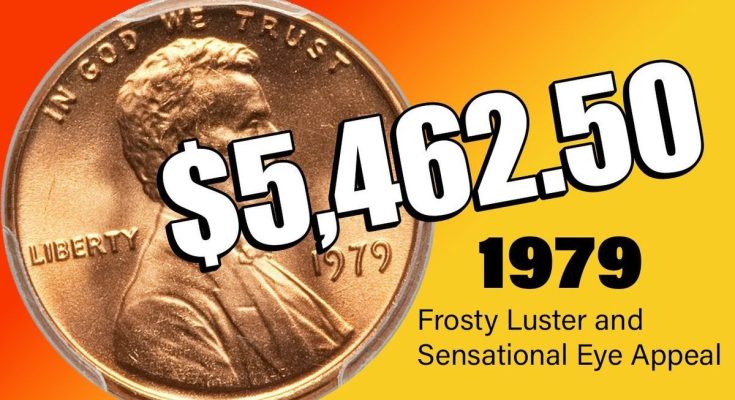💰 Is This 1979 Penny Worth Thousands? The Hidden Value in Your Pocket Change
The images are designed to be electrifying: a massive, gleaming penny from 1979, the year you might easily find in your change jar, slapped with a valuation of up to $14 Million. While the multi-million dollar figure is characteristic of the online numismatic hype machine, the underlying message is absolutely true: the 1979 Lincoln Penny is a coin that, under very specific conditions, can be worth thousands of dollars.
For a coin minted in the billions, like the 1979 cent, its rarity and extreme value are entirely dependent on two factors: perfection in condition and significant minting errors. Every collector should know what to look for before dismissing this common-date copper coin.
🌟 Key 1: The Premium for Perfection (Condition is King)
The vast majority of 1979 pennies you encounter are worn, brown, and worth only their 1-cent face value or, if you’re lucky, their copper melt value (which is slightly more than a cent). However, a coin that somehow escaped circulation in flawless condition commands an immense premium.
-
The “Red” Designation: Color is critical for copper pennies. Coins that retain 85% or more of their original brilliant copper luster are designated “RD” (Red). This original color signifies the coin was properly stored and barely handled.
-
The MS-68 Treasure: The highest possible auction values for regular-strike 1979 cents come from coins graded MS-68 (Mint State-68). This is a grade that denotes a practically perfect coin under 5x magnification. An official auction record confirms a 1979 (No Mint Mark) cent in MS-68 Red condition sold for $5,463. Furthermore, a 1979-D (Denver Mint) cent in MS-67+ Red condition has sold for nearly $4,000.
-
The Proof Distinction: Coins struck at the San Francisco Mint (‘S’) are Proof coins—special, highly polished strikes made for collectors. The 1979-S Proofs come in two varieties (Type 1 and the rarer Type 2 Clear-S) and, if graded PR-70 Deep Cameo (perfect with stark contrast), can reach prices up to $3,819.
If your 1979 cent looks untouched, bright, and glossy, DO NOT CLEAN IT and seek professional grading immediately.
🔨 Key 2: The Rare Error Coins
The only other way a 1979 penny can become a four-figure or more find is if it contains a significant mint error. While the most famous errors (like the 1943 Copper Cent) come from major composition changes, the 1979 date has its own share of valuable anomalies.
The End of an Era: Why 1979 Matters
The 1979 cent holds a special place in history because it was one of the last Lincoln cents struck primarily of 95% copper. Just three years later, in 1982, the U.S. Mint transitioned to the copper-plated zinc core, a composition still used today. This makes the heavier, solid-copper 1979 cent a key piece representing the end of a long numismatic era, driving continued collector interest in high-grade examples and errors.
In summary, while you won’t find a $14 million penny, the $5,463 auction record for a pristine 1979 cent confirms that the treasure hunt is very real. If you find a 1979 coin that looks brand new or has a noticeable flaw, always consult a professional.
Would you like me to use the YouTube tool to find a video that details how to identify the 1979 Doubled Die error?



